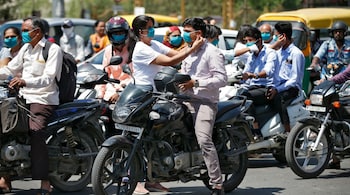The Centre issued Unlock 3.0 guidelines earlier this week, easing relaxations further, yet maintaining caution. It also said that the onus to permit/bar certain activities lies on the state governments, and that they can take those decisions after proper assessment of the ground situation.
Here is what remains open, and what continues to remain shut in Rajasthan:
# Yoga institutes, gyms and small places of worship will be allowed to open in Rajasthan.
# Conditional permission to reopen small places of worship (temple, mosques, gurudwara), which used to have an average daily visit of up to 50 people prior to the lockdown, was given under the guidelines to be implemented from August 1 to 31. All other religious places will reopen from September 1.
#Yoga institutes and gymnasiums will be allowed to function from August 5 for which standard operating procedures (SOP) will be issued by the Ministry of Health and Family Welfare.
# Independence Day functions at district, sub-division, municipal and panchayat levels will be allowed only by following health protocols.
#Marriage-related gatherings may also be held with the conditions of giving prior information to Sub-Divisional Magistrate, maintaining social distancing, and allowing maximum 50 guests.
#No restriction on inter-state and intra-state movement of people and goods; provided passengers don't exceed the permitted seating capacity of the registered vehicle.
# The order states that face covering, social distancing, spitting in public and workplaces, consumption of liquor, paan, guthka, and tobacco in public places is prohibited and punishable with fine.
What remains closed:
#Schools, colleges, educational and coaching institutes will continue to remain closed up to August 1.
#Cinema halls
#Swimming pools, entertainment parks, bars, auditoriums, assembly halls and similar places shall remain closed.
# Metro rail services will remain suspended
"Violation of any of the above conditions is an offence and punishable with a heavy fine," the order from Rajasthan government said.
Discover the latest Business News, Sensex, and Nifty updates. Obtain Personal Finance insights, tax queries, and expert opinions on Moneycontrol or download the Moneycontrol App to stay updated!









